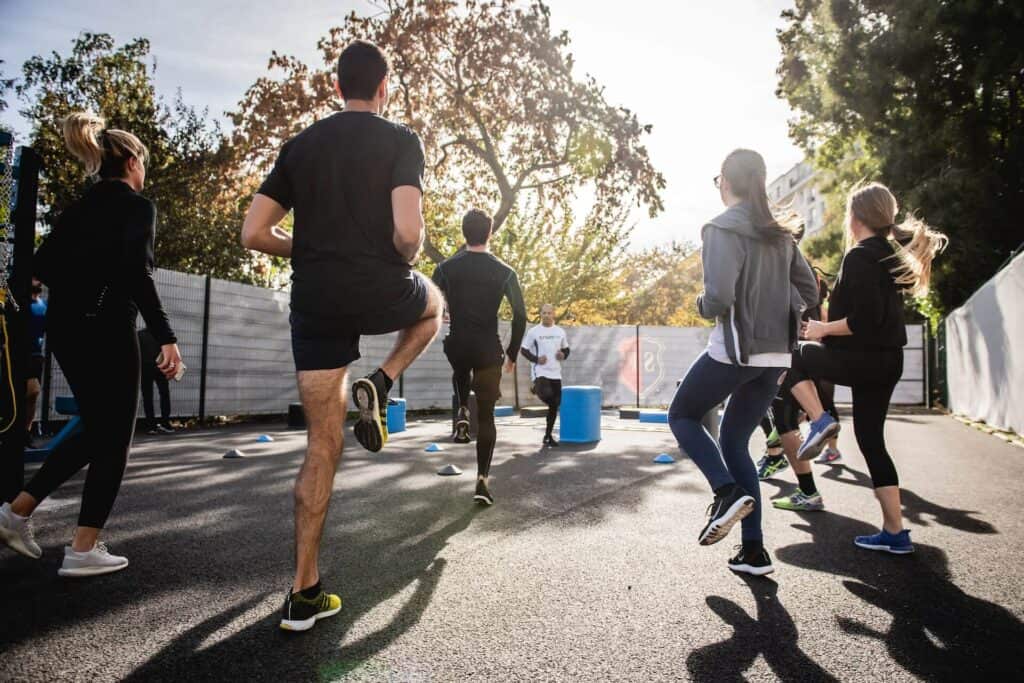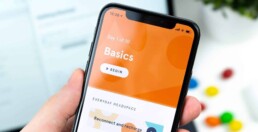5 Things You Didn’t Know Were Gamified
Gamification is rather a new concept that carries great importance in almost every field today. Especially in marketing strategies, gamification is one of the preferred ways to capture the attention of the audience.
Gamification consists of gaming elements integrated into a non-gaming environment. The reason for this incorporation is to increase the engagement level of the users. If you are wondering about these gaming elements, you can read our previous blog post about the topic here.
In this blog, we present the top 5 examples of gamification that you might not have thought about before. The examples will be categorized according to their level and how fast you can spot the gamification strategies used. Let’s start with an easy one!
Easy
Duolingo
Learning a new language might be an interest for many people at some point. One of the easiest ways to start learning a new language is online learning software because everyone can have access to them easily and they are mostly free! Therefore, the first example comes from one of the most popular language learning apps out there: Duolingo.
And, how does Duolingo use the game elements? Here are all the obvious gamified features that are used which makes it an easily distinguished example:
-
- It uses a level system: The lessons are divided into different levels and titles. The user can go to the next level only when the previous ones are completed or they can be skipped if the user is showing good performance on the level. At each level, there are no extreme differences in the difficulty level. There are 3 or 4 new words or phrases introduced in each level. Thus, the competency is neither too easy nor too difficult which can keep the motivation of the user at an optimal level.
- Reward system: In this specific software, users can collect rewards after completing a lesson. Opening a treasure chest can help users to collect in-app gems and some potions for x2 XP. These gems can buy the “streak freezers”, and “extra lives” in the app. This is a great example of engaging the user with the platform.
- Collecting badges: The user becomes more engaged and motivated to use the app more with the rewards, and that helps them to complete more lessons. After completing the lessons, the user can collect badges. Also, the earned badges are shown in the public profile of users. That is an excellent motivation source! Moreover, the app works to build a community by telling the users how many people are learning the same language at the same time. These sentences motivate the user and increase the community feeling.
- Streak: Showing the streak to the user and counting the consecutive days the app has been used is a great way to encourage them to continue using the app. When the user comes to the streak milestone, the software gives rewards such as giving a free trial of the premium version of the game for a couple of days. Also, the app gives some statistical information about the users who played regularly. For example, “Users who complete XX days in a streak are XX% more likely to complete the course!” These types of sentences are a great source of encouragement for the users.
Duolingo is a great example of gamification because of all the elements that are listed above. These elements keep the user encouraged, engaged and motivated. This way, users can learn in a fun way, and keep coming back to use the app!

Medium
Have you ever collected some in-app points to get some reward such as a free product? Or collected mile points to get a discount on your next flight on your most preferred airline? If your answer is yes, you already have experienced and used this level of gamified application! Medium-level gamified applications can be distinguished by some less obvious features. For example, using fidelity points or cards and loyalty points. Here are 2 examples in this matter:
Yelp
Yelp is a software that can be used via its website or apps. The main purpose of the app is to leave reviews, ratings, and photos of the businesses that the users visit. Also, there is a friends list in this app like Facebook. So, what kind of gamification elements do this app use?
-
- Elite status: Who would not like to feel special? Yelp gives this special feeling to its users! If they give frequent reviews, answer questions, and participate in the Yelp community they can have elite status. As it can be seen, this can keep users more active in the app.
Starbucks
Starbucks is also using a Reward app to keep customers purchasing their products. This app is an excellent example of gamification used in real life.
-
- Collecting stars: The user accumulates stars with every product they purchase in this app. Also, the graphical design makes it fun; the stars look like cups and you can fill the cups! The more purchases are made, the more benefits the user earns. These benefits can be a birthday gift or an extra cup of coffee. Who would not like to have these fun and diverse benefits while sipping on their favorite coffee?

Hard
In the following cases, the game elements are more subtle and difficult to find. Therefore, you may have not noticed these great examples of gamification!
Linkedin profiles
When signing up for LinkedIn, the steps that the user should follow to complete the profile are given in the beginning. LinkedIn is a platform to reach out to more people and widen the network to find more job opportunities. Therefore, LinkedIn shows a progress bar in the beginning as you are setting your profile. The more your progress bar is full, the easier it is to reach more people. This is a smart gamified application.
Tinder is also using the same method to make its users complete their profiles. So, if you want to reach more people outside of working hours, you can try Tinder and see its gamification!
Nike+ Run Club
Through the power of community, Nike+ Run Club is connecting people. Nike increases user retention by providing the opportunity to create a supportive community. Users can have this community by comparing the steps taken and distances run with other users of the app. This competitive feeling helps people to connect to other users and be more motivated. This is an excellent example of gamification because, with this app, users can customize their training program, and complete the challenges to win badges and trophies.

Honorable Mention
Finally, as an honorable mention, we would like to present an amazing real-life gamification example. Gamification does not have to be only in the digital world. Moreover, just because it includes game elements, it also does not mean gamification or games are only for younger people. Here, we can also highlight the fact that playfulness is a major factor in games in general as it can be seen in this specific example. Therefore, anything gamified should be fun, and the fun can come from even only being playful! The initial aim was to encourage people to use the stairs instead of the escalator to fight obesity. The research shows that after the stairs were turned into piano keys, people preferred stairs to escalators!
Why use gamification?
In our previous post, we have explained the gamification concept. The post can be read here. However, let’s quickly reintroduce what is gamification. In short, gamification is the application of elements of game playing to different areas of activity. This is usually seen as an online marketing technique to engage with a service or a product. However, it is essential to remember that gamification is not the game itself but the use of game elements in non-gaming functions and circumstances. Especially in the last decade, gamification has become a hot topic both in education and in business. With this blog, we aim to delve into the gamification concept.
Why using gamification?
The fact that traditional motivational elements, such as curiosity and adding personal challenge, are no longer valid in today’s world is emphasized in business and personal development books. This is also proven by scientific research. Gamification of any element creates an internal trigger by changing the perception of the feature, making it more attractive. The point that definitely should be highlighted about gamification as a concept is that the majority of people play games just because they want to play. Thus, people play games of their own free will, and especially the younger generation spends time on games equal to their weekly working hours. Therefore, to grab the attention of your customers or your students, it is crucial to gamify the elements of the topic concerned.
The concept of gamification became popular as the growing game industry showed that games have a powerful effect on human motivation. Before this concept officially emerged, some workplaces already used practices with game mechanics: for example, choosing the best employee of the month to keep the employees engaged and motivated. Therefore, adding game elements to introduce competition is a great use of gamification in business. Moreover, this concept is highly useful for educational purposes and research shows that it has a positive impact on learners’ motivation and engagement.
Which gamification elements can you add to your apps & learning environment?
Gamification is a popular keyword, especially in the education sector. Moreover, learning apps as learning environments are very popular. You might then be wondering what types of game elements you should include in your apps and learning environment. We would like to answer this question with the following list of elements:
- Level, points, scores
- Progress bars
- Rewards and badges
- Storylines
- Countdowns and schedule
- Personalization
- Leaderboards
- In-app tools
- Micro-interactions
All the elements listed above are aiming to increase competitiveness and keep the users motivated and engaged with the product. Therefore, if gamification is included, the possibility of users’ keep coming back and using the app is more likely than ever. Moreover, gamification and game elements can be included in everything that can be thought of. The researches also show that gamified training in workplaces keeps the employees engaged and reduces boredom during training. It is very important to realise what is popular and preferred by the users, especially these days. Therefore, including the best-known game elements in the apps and learning environment would give you a great advantage.
Best practices for retaining users with game elements
As it was mentioned previously, the main reason for gamification is to keep the users retained, engaged, and motivated. There are some specific gamified solutions and practices that increase user engagement.
Let’s get into the details! Here’s a list of 4 practical examples:
- Tutorial: Tutorials teach the user how the game works, making it easier to engage with. However, it is important to not make the tutorial too long, complicated, or too simple. By tracking whether a user skips certain parts of the tutorial, you can get an estimate for the right tutorial features.
- Reward: Adding daily rewards will keep the user coming back to the app every day to collect them. Moreover, giving rewards after an achievement also motivates and encourages the user to keep coming back to the app.
- Notifications: Using push notifications is again encouraging the user to keep using the app or the game.
- Providing the chance to have a community: for example, setting options such as “invite a friend” or “ask a friend to send a heart” creates a sense of companionship or competition. When the users feel like they have a virtual community on the app, it will help them use the app instead of dropping out.
These practices are all part of the traditional gamification approach. However, it is worth mentioning that trends and circumstances rapidly evolve and change. Nowadays, many apps look for different ways to increase retention because users usually avoid push notifications. Moreover, inviting friends through Facebook is also seen as a fading trend. Therefore, even though these practices are considered some of the best to retain users, it is important to keep a dynamic approach and check what solutions users themselves are gravitating towards.
The advantages of implementing gamified solutions
Gamification has become very popular in the last decade because it has a lot of advantages. Moreover, there are so many benefits of why gamification is worth using in learning apps or solutions. The statistics from the research also prove that when gamification is used learning is more effective. Here are the best advantages of implementing gamified elements, especially for e-learning solutions:
- Increases the engagement
- Improves the motivation of the users
- Helps and improves retaining knowledge
- Elevates cognitive development
- Helps education to become more accessible
You may have more questions about gamification, and you can contact MeKiwi to have your answers! As MeKiwi, we are providing services to build custom-made gamified solutions to your needs in the business and education fields. Do you want to make your product digitally engaging and motivating? Let us do it for you!
Do not hesitate to contact us for more information and the best digital gamified solutions.





